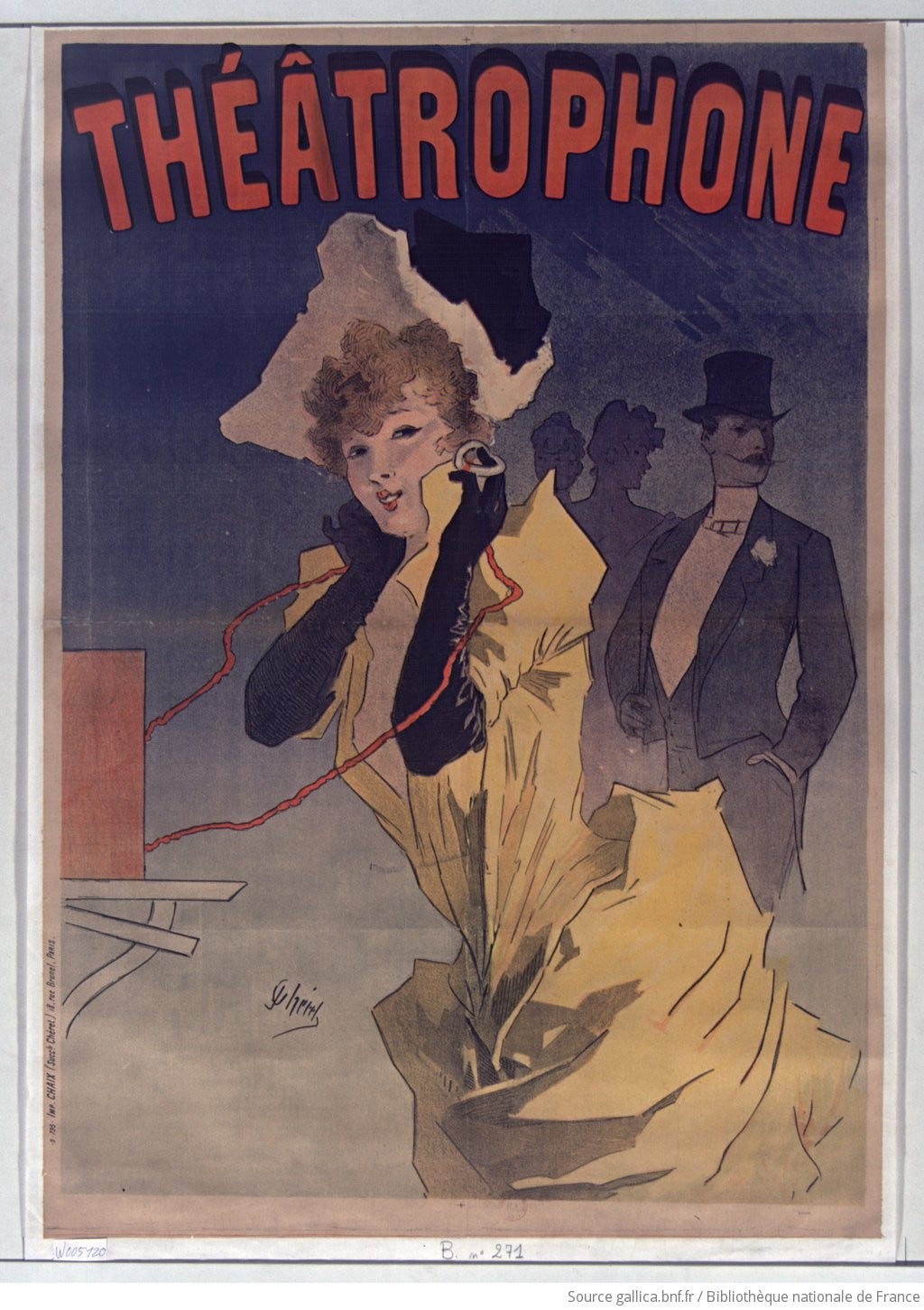Back in the 19th century, a lot of major expositions were held in France. One of them was the Paris Exposition in 1889, when the Eiffel Tower was unveiled to the world.
Another one was the Paris Electrical Exhibition of 1881. It’s where engineers from all over the Europe and the United States showcased their electricity-inspired inventions. Thomas Edison, for example, exhibited his version of incandescent lighting, as did several other European engineers.
Another interesting invention made its debut in 1881: the first version of what would later become the théâtrophone.
What is a théâtrophone?
This device was derived from an invention by a man named Clément Ader called auditions téléphoniques. (It doesn’t really translate well: audition means hearing and téléphonique - well, you get it.)
Ader’s invention allowed people to listen to a live theater performance happening in another part of Paris through a telephone receiver. To demonstrate, Ader had a room filled with 20 telephone receivers so visitors could listen for up to five minutes at a time. It was so popular that — according to one newspaper article — 4,000 people lined up one evening to try it out!
Anyone can listen to the theater
By 1889, a duo of engineers, Belisaire Marinovitch and Geza Szarvady, would open “Compagnie du Théâtrophone”, a broadcast service that expanded use of Clément Ader’s auditions téléphoniques, and they called it the théâtrophone.
The théâtrophone was placed in cafes, hotels, and clubs where theater lovers gathered to share their common interest. Listeners would pay 50 cents to hear five minutes of a performance. If they wanted to keep listening, they’d have to drop more coins into the machine.
By 1891, the Compagnie du Théâtrophone created a home subscription service called théâtre chez soi — home theater — said to be quite expensive. But subscribers would have unlimited access to performances, unlike listeners in public places.
The more home-service théâtrophone was a portable box that had two telephone receivers. A listener could place a receiver to each ear and hear a live opera, musical concert, or play. Some people called it the ‘opera in a box’. Also, its portability meant a listener didn’t have to stand at a receiver on the wall (like a telephone) — but could listen while sitting comfortably on a chair or sofa.
For its time, this was an exciting invention. Parisians loved theater and this made it more accessible without going to a live performance.
Wait — how did this system work?
Microphones (invented in the 1870s) were placed inside several major Paris theaters. Each microphone was connected to telephone lines that were piped over to a central “switchboard”, which was managed by an operator. When a subscriber wanted to dial in to a performance, the operator would connect them with various theaters around Paris. The lines were actually linked through the Paris sewer system (!).
As amazing as it was, there were some problems with the théâtrophone.
First, the audio lines linking subscribers with theaters were limited within a small urban area. Second, the sound quality wasn’t terribly good. Third, it was expensive for the average consumer. As a result, Compagnie du Théâtrophone ran into financial problems and didn’t expand as much as its owners had hoped.
Still, the théâtrophone was active until the 1930s — and I’d say 40-50 years is a pretty good run.
Before you go: if you want to read more about this, there is a fascinating paper written by a researcher named Melissa Van Drie about the origins and impact of the théâtrophone.
Sources:
Early Radio History article about the théâtrophone
Article about the théâtrophone from Journal de Villefranche, 1889









Wow! So interesting…
Fascinating !